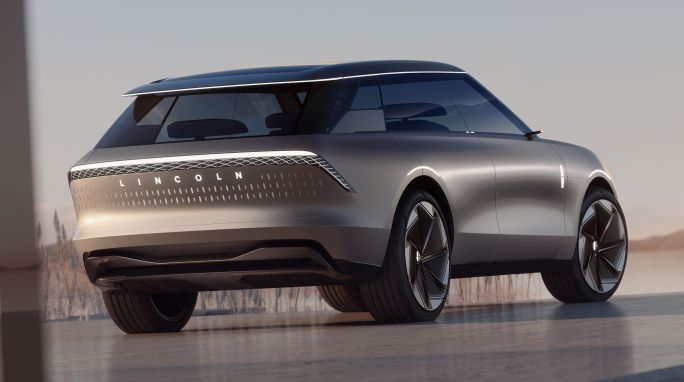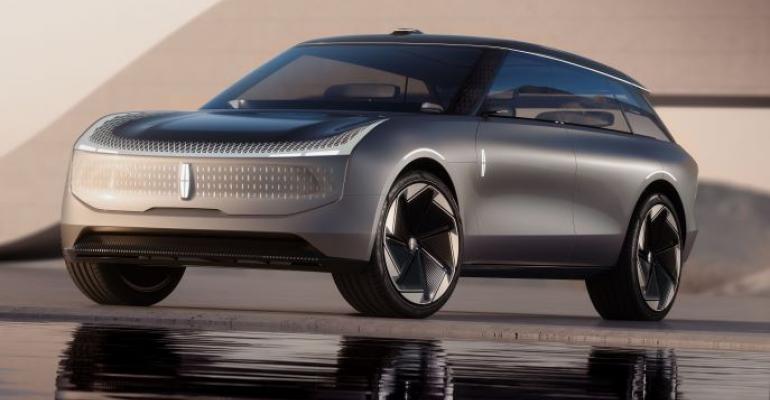LOS ANGELES – As of Feb. 4 of this year, 100 years have passed since the Lincoln Motor Co. became part of Henry Ford’s corporate family.
During that time, the company’s success was driven largely by the popularity of its chrome-drenched, button-tufted sedans among traditional luxury car buyers, highlighted by certain notable products like the sleek Zephyrs of the late 1930s, the “suicide-door” Continental sedans of the 1960s and, more recently, the behemoth Navigator SUVs of the 1990 and 2000s.
As it enters its second century, however, Lincoln is facing newfound challenges as luxury brands from Europe, Asia and even Silicon Valley have crowded into its space and customers have eschewed sedans and coupes in favor of higher-riding crossovers and SUVs.
Back in February, Lincoln promised it would stay relevant by supplementing its current lineup of four cushy Ford-based CUVs and SUVs with three new electric vehicles by 2025 and a fourth by 2026. But the company didn’t give us a sense of how these electrified Lincolns might look and feel.
Now, with the unveiling of the Lincoln Star battery-electric concept vehicle, simultaneously unveiled in Beijing and Los Angeles, we are getting that first look of Lincoln’s electric future. And it looks great.
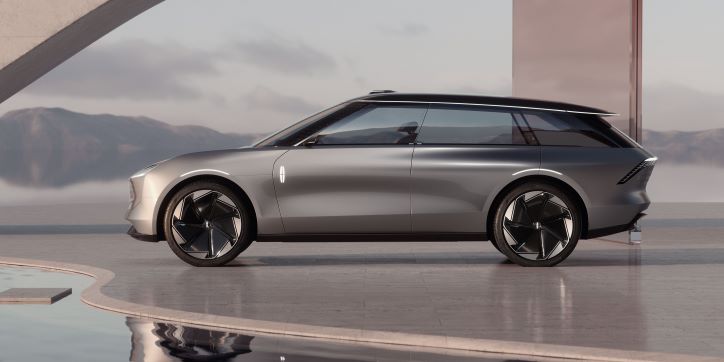
Lincoln doesn’t say whether the large CUV/wagon can be seen as a direct preview of any particular new Lincoln model; rather, the car should be seen as a preview of the automaker’s new exterior-form vocabulary for electric vehicles and some of the ways Lincoln might take advantage of the newfound flexibility of EV architectures.
It offers both distinctive styling motifs as well as plenty of futuristic features that reflect fresh thinking within Lincoln’s design and engineering team. Best of all, most of it seems eminently producible.
A Rolling Light Show
The Lincoln Star concept looks nothing like any current Lincolns, from its low, pointed nose to its Kamm-back tail (pictured, above). A band of light spanning the nose and reaching back over each fender to the A-pillars creates a distinct front light signature we expect all new electric Lincolns, and perhaps all new Lincolns in general, to feature moving forward.
But that’s just the beginning of the light shows the Star concept puts on: in certain modes, the light band sprouts lacy diamond-pattern mesh elements; small Lincoln stars twinkle in place of a traditional grille; illuminated Lincoln emblems appear on the body sides; and thin strips of light define the fender arches, floating roof panel and even the tiny exterior mirror cameras, all of which become animated in a welcoming sequence as the driver approaches the car.
Out back is a wraparound tailgate with a taillamp treatment similar to the band of light up front. Its clamshell-style opening cleverly allows the lower section to flip down into a nifty, rear-facing couch (pictured, below).
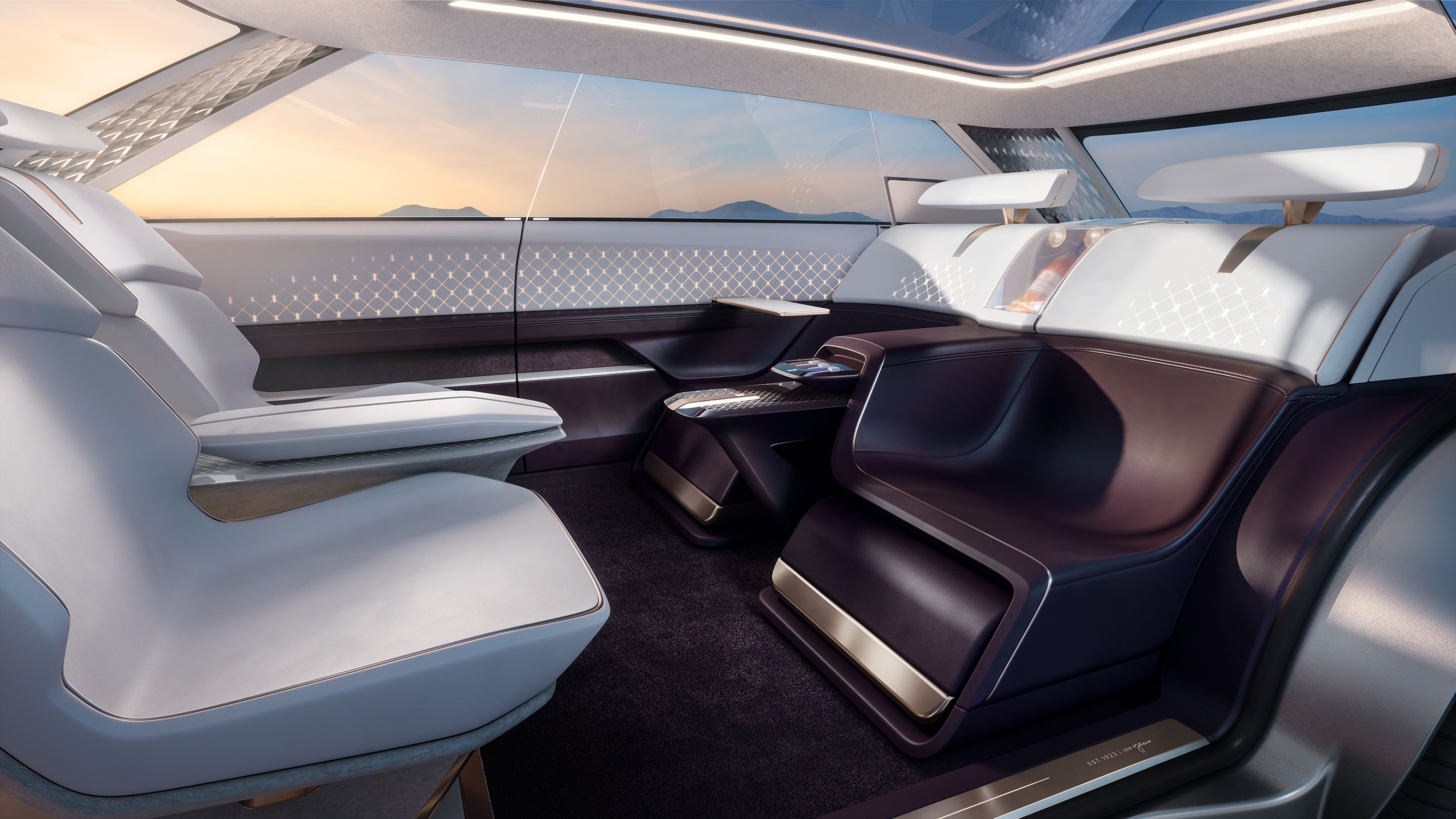
Like most BEVs, the Star concept features some cargo space up front to supplement the conventional rear cargo space, but the Star’s “frunk” is particularly sexy with its semi-transparent, electrochromic hood and illuminated floor that flows seamlessly into the passenger space behind it. Beneath that, at ankle level, is a fully enclosed cargo bin that slides out like a drawer.
Immersive Interior
Opening the “coach doors” grants access to a sumptuous cabin rendered with sustainable materials including leather and chrome alternatives. Lincoln says the space is large enough for three rows of seats but the concept as shows was instead configured to provide more spacious seating for four (pictured, below).
Its glass roof and 3-D-printed, metal-lattice A- and D-pillars flood the space with light during the day, while lights embedded throughout the ceiling, floors, door panels, transparent center tabletops and even the seatbacks ensure no shortage of illumination regardless of available daylight.
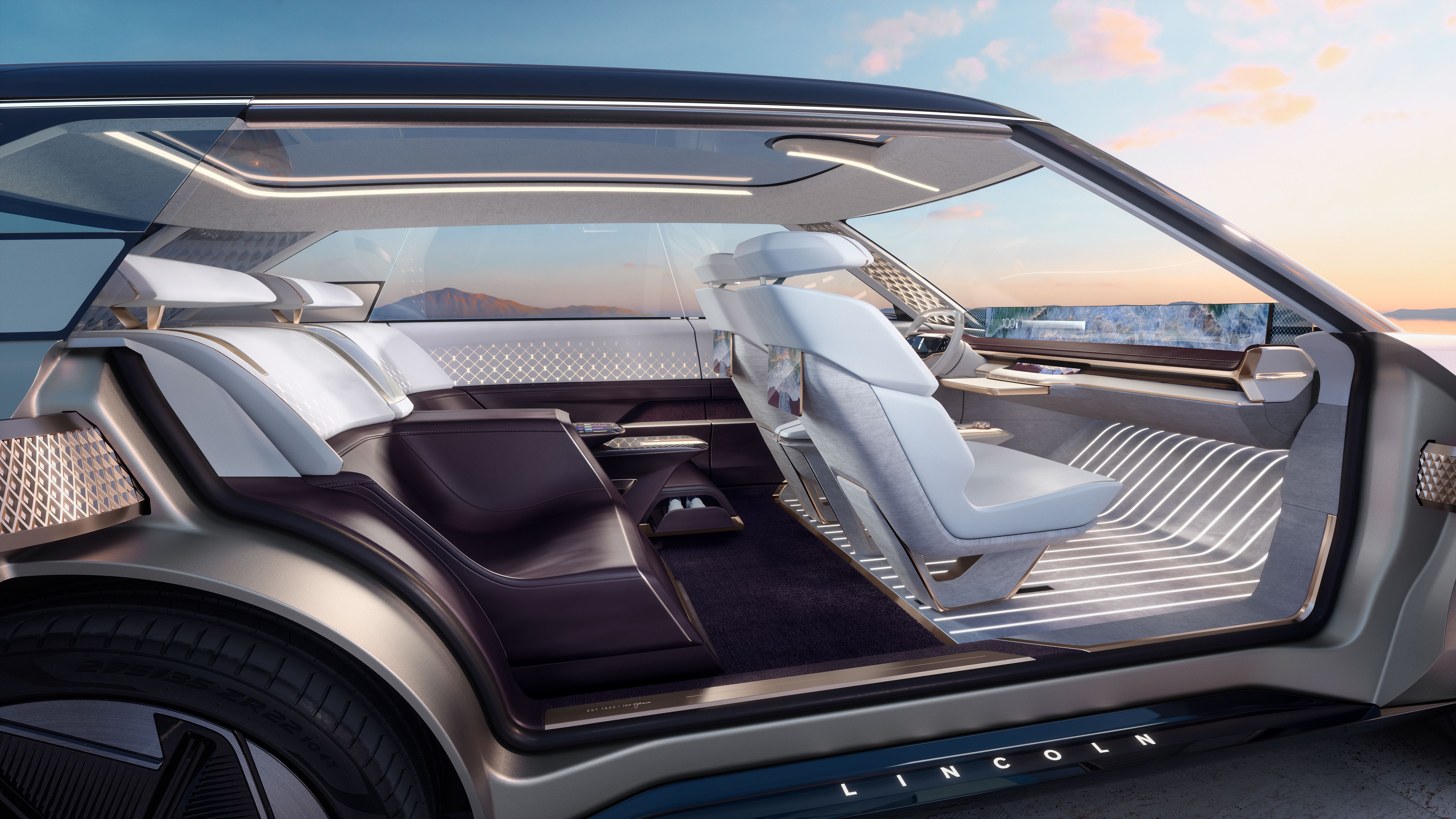
Along with video animations for its “coast-to-coast” high-resolution front information display and rear-seat video displays, those lights work in concert with the sound system and cabin scent atomizers to create three distinct immersive “rejuvenation moods” that include Coastal Morning, Mindful Vitality and Evening Chill.
The Lincoln Star concept interior’s other nifty features include a “digital briefcase” that can be concealed in the coach doors, one-pedal driving via a single crystalline pedal (pictured, below), and deployable extended lower rear-seat cushions that turn them into chaises, replete with shoe storage.
Between them resides a beverage chiller and a pair of stem glasses, though front-seat occupants can join the party, too, by swiveling their seats around to face rearward. That sort of feature likely won’t be enabled (for the driver’s seat, anyway) with the vehicle in motion, at least until autonomous-driving technology has advanced well beyond where it is today.

Expandable Electronic Architecture
In preparation for such a moment, Lincoln is developing a redesigned electrical architecture that adopts a “software-first approach.” This combines the workload of multiple electronics systems into a central processing system, resulting in an “expandable ever-evolving digital platform fully networked to seamlessly extend your digital ecosystem” and facilitating greater connectivity, productivity, entertainment and safety capabilities than any Lincoln to date.
Newfound vehicle-to-vehicle and vehicle-to-infrastructure communication capabilities should also enable the car to park itself, avoid inclement weather areas and anticipate road hazards as reported by vehicles on the road ahead.
Lincoln says its Android-based interface with built-in Google Apps and services as well as Google Play will help “humanize” the experience of interacting with the vehicle – like having a companion in the car with you, not just a virtual assistant.
As mentioned before, the Lincoln Star officially is just a concept car at this point, and how much of its Tomorrowland tech and trappings ends up in any of the four BEVs Lincoln plans to add to its lineup by 2026 remains to be seen.
But the Lincoln Star concept seems to contain enough style and substance to suggest that Lincoln is not just a brand with a long history, but a brand that could have a promising future.
